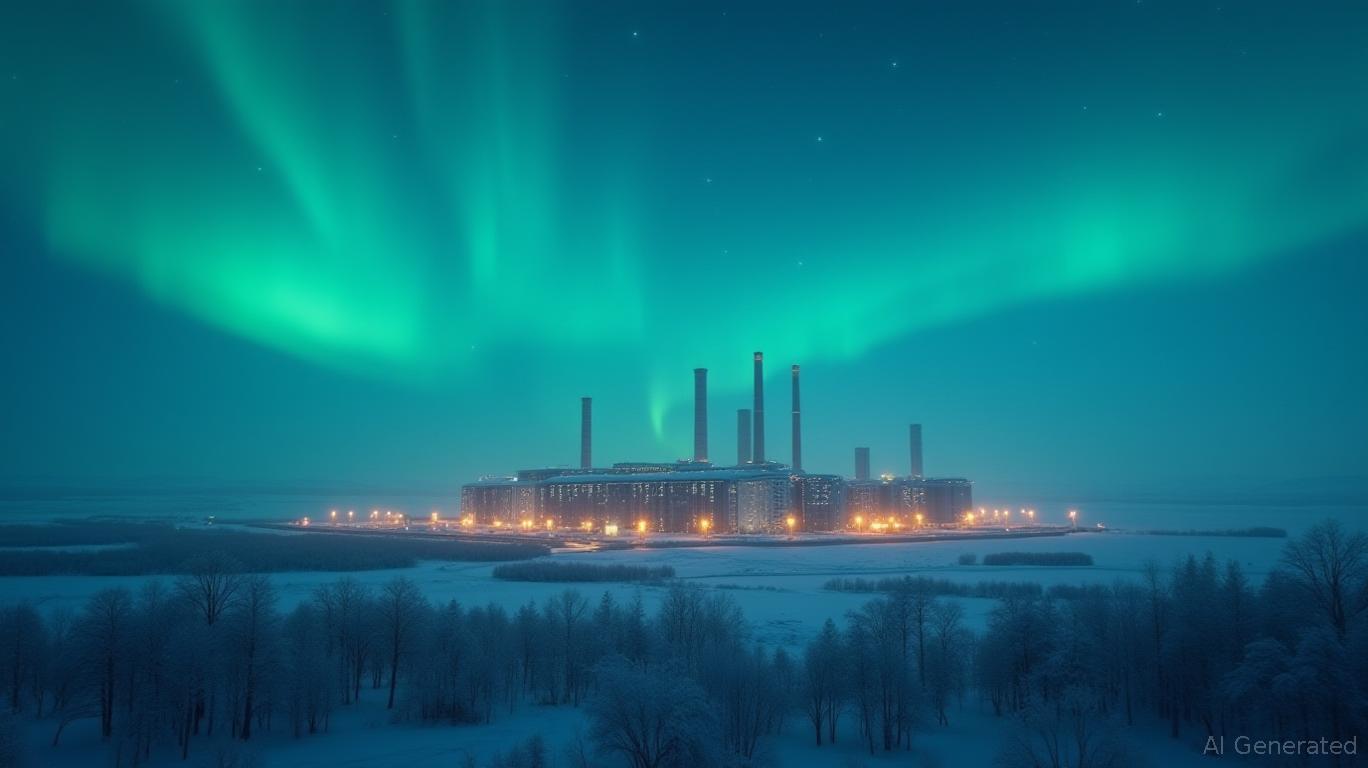Alberta's Gas-Powered Data Centers: The Undervalued Play on the AI Boom
The global race to build AI infrastructure is reshaping energy demand, and one region is poised to capitalize: Alberta, Canada. With its abundant natural gas reserves, underappreciated grid capacity, and strategic regulatory tailwinds, Alberta is emerging as a goldilocks market for data centers—offering the lowest electricity costs in North America while unlocking stranded gas assets. For investors, this presents a compelling leveraged play on the AI
, even as ESG critics dismiss fossil fuels. Here's why Alberta's energy infrastructure is the overlooked key to the $200 billion data center market—and why it's time to act before the market catches on.The Cost Equation: Alberta Beats U.S. Competitors Hands-Down

In 2024, Alberta's wholesale electricity prices plummeted to $62.78 per megawatt-hour (MWh)—a 53% drop from 2023—thanks to a 11.3% surge in grid capacity. Compare this to U.S. rivals:
- Texas: $8.6¢/kWh (commercial) in 2025, up 2.3% from 2024
- Oregon: $10.86¢/kWh (commercial) in 2025, up 3.7%
- Nevada: $11.33¢/kWh (commercial) in 2025, down slightly but still higher than Alberta
Alberta's grid now boasts a 32% reserve margin—far exceeding U.S. averages—and its gas-fired generation provides unmatched reliability. While Texas and Oregon grapple with grid strain (ERCOT's 2030 demand doubling!), Alberta's 23,122 MW capacity (up 1,876 MW of gas in 2024) ensures data centers can operate at full throttle without blackouts.
The AI Infrastructure Play: Beacon AI and Wonder Valley Are Game-Changers
The Alberta government's $100 billion AI hub ambition isn't just rhetoric. Projects like Beacon AI (a partnership with Microsoft and Cenovus Energy) and Wonder Valley are pioneering gas-to-compute ecosystems. These facilities use stranded gas assets—remote or low-value reserves—directly as fuel, bypassing grid constraints. For example:
- A 100 MW data center in Alberta consumes gas at $1.30/GJ, versus $3+/GJ in U.S. hubs.
- Producers like Cenovus (CVE) and Petrolium (PETQ) gain new revenue streams, turning stranded gas into AI compute power.
This model solves two problems:
1. Gas producers avoid pipeline costs by selling directly to data centers.
2. Data centers slash OpEx while accessing 24/7 baseload power—critical for AI training.
Regulatory Tailwinds: Alberta's Grid Rules Favor Growth
The Alberta Electric System Operator (AESO) has engineered a pro-investment environment:
- Supply cushion directives ensure grid stability even during winter peaks.
- Secondary offer caps prevent price spikes, shielding consumers.
- A $7.6 billion wholesale energy market (2024) signals liquidity for infrastructure projects.
In contrast, U.S. states like Texas and Oregon face phantom load chaos—speculative data center projects inflating grid costs. Alberta's rigorous interconnection rules and $100B AI fund ensure capital flows to proven projects, not speculative bubbles.
Why ESG Critics Are Missing the Point
Critics argue natural gas violates ESG principles, but Alberta's model is smarter:
- Gas as a transition fuel: Alberta's grid still gets 74.7% of power from gas, but renewables (wind/solar) rose to 19% in 2024.
- Carbon capture partnerships: Projects like ERA Clean Energy sequester CO2 from gas plants, aligning with corporate net-zero goals.
- Job creation: Every $1 billion in data center investment creates 1,500+ jobs, per Alberta's 2024 report.
While ESG funds may shun gas, AI's compute needs are too urgent to wait for perfect solutions. Data centers require reliable, cheap power now—and Alberta delivers.
Invest in the Pipeline to the Future
The winners here are:
1. Gas Producers: CVE, PETQ, and Pason Systems (PSI) benefit as data centers boost demand.
2. Pipeline Operators: Enbridge (ENB) and TC Energy (TRP) gain from gas transport to remote sites.
3. Data Center REITs: Firms like EdgePoint Data Centres (private now, but ripe for IPO) will dominate Alberta's hub.
While ESG funds punish gas stocks, the AI boom is a tailwind. Investors who buy now—before Alberta's data center boom hits mainstream awareness—can capture 20-30%+ returns as compute demand surges.
Conclusion: Alberta's Time Is Now
The world's AI infrastructure is being built on cheap, reliable energy—and Alberta's gas-powered grid is the best-kept secret in this race. With regulatory support, stranded asset monetization, and costs undercutting U.S. hubs, this is a leveraged bet on the future of compute. Ignore ESG noise; the data speaks: Alberta is the undervalued leveraged play on the AI boom. Act now before the market catches on—and the Alberta advantage evaporates.
Investors: It's time to secure your position in the gas-powered data center revolution.

Comments
No comments yet